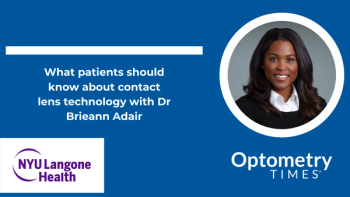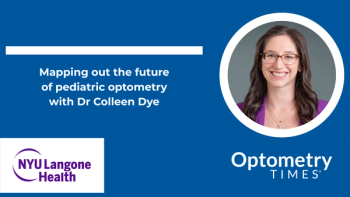
AAOpt 2025: Scanning the eye from front to back for life-threatening signs and symptoms
Raman Bhakhri, OD, FAAO, states that even if the statistics are normally against the chance of a life-threatening condition, the margins for error are slim.
Raman Bhakhri, OD, FAAO, detailed a presentation about unique and potentially life-threatening medical cases in optometry, focusing on the importance of creative diagnostic thinking and thorough investigation. The conversation centers around a lecture presented by the speaker and Joe Shovlin, MD, which aimed to highlight rare medical conditions that might be overlooked by traditional diagnostic approaches. The primary goal of their lecture was not to showcase extraordinary cases, but to encourage healthcare professionals to think beyond conventional diagnostic patterns. Bhakhri emphasized that seemingly minor or coincidental symptoms could actually be critical indicators of underlying serious conditions. A compelling case study involved two young patients, aged six and seven, who presented with degenerative macular conditions. Initially diagnosed with Stargardt disease, further investigation and genetic testing revealed a more serious diagnosis of Batten's disease, a potentially fatal condition. This case exemplifies the importance of not accepting initial diagnoses at face value, especially when symptoms don't align perfectly with expected presentations. Bhakhri stressed several key diagnostic principles:
- Question symptoms that don't fit typical patterns
- Conduct thorough patient histories
- Be willing to perform additional testing
- Consult with colleagues when uncertain
- Remain open to alternative diagnoses
He highlighted the challenges of diagnosing new patients without established medical histories, noting that unfamiliarity can make identifying rare conditions more difficult. The importance of collaborative professional networks was repeatedly emphasized, with the speakers advocating for optometrists to reach out to colleagues without feeling embarrassed about seeking additional insights.
The lecture's broader message was about maintaining intellectual curiosity and avoiding diagnostic complacency. By sharing unique cases, they aimed to inspire healthcare professionals to dig deeper, ask more questions, and consider possibilities beyond the most statistically likely diagnoses. Ultimately, the discussion underscored that medical diagnosis is not just about recognizing common conditions, but about maintaining a flexible, investigative approach that prioritizes patient care and comprehensive understanding.
Newsletter
Want more insights like this? Subscribe to Optometry Times and get clinical pearls and practice tips delivered straight to your inbox.



















































.png)


